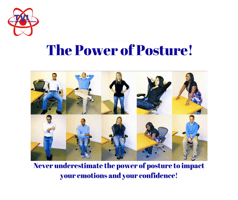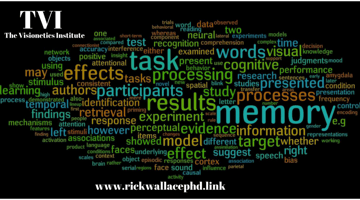10 Practices That Will Help You Win Your Day One of the most important things to remember about...
Setting Your Intent – And Creating an Optimal Future
Exploring the Neuroscience and Magic Behind Setting Your Intent – And Creating an Optimal Future for Yourself
By Kris Hallbom and Tim Hallbom | Courtesy of the NLP Institute
[caption id="attachment_2013" align="alignleft" width="274"] Setting Your Intent – And Creating an Optimal Future[/caption]
"Life is a mirror and will reflect back to the thinker what he thinks into it" - Ernest Holmes You are always creating your future. You bring it forth through your thoughts, actions, feelings, beliefs, values,
goals and dreams. You do this regardless of the level of your conscious awareness. Your present moment awareness coupled with the future that you create is a deeper reflection of your subconscious programming. All of your future goals and dreams are not only a reflection of your subconscious thinking, they are also mediated by your Reticular Activating System (RAS). The RAS is the part of your brain that serves as a filter between your conscious mind and your subconscious mind. The RAS, which is located in the core of your brain stem, takes instructions from your conscious mind, and passes them on to your subconscious mind. Because of this biological function, whatever you are thinking about or focusing upon will seep down into your subconscious mind only to reappear at a future time. Have you ever decided that you wanted to buy a certain car, and shortly there after, you see cars everywhere like the one you wanted? That is how the RAS works.(1) [caption id="attachment_2014" align="alignleft" width="600"]
Setting Your Intent – And Creating an Optimal Future[/caption]
"Life is a mirror and will reflect back to the thinker what he thinks into it" - Ernest Holmes You are always creating your future. You bring it forth through your thoughts, actions, feelings, beliefs, values,
goals and dreams. You do this regardless of the level of your conscious awareness. Your present moment awareness coupled with the future that you create is a deeper reflection of your subconscious programming. All of your future goals and dreams are not only a reflection of your subconscious thinking, they are also mediated by your Reticular Activating System (RAS). The RAS is the part of your brain that serves as a filter between your conscious mind and your subconscious mind. The RAS, which is located in the core of your brain stem, takes instructions from your conscious mind, and passes them on to your subconscious mind. Because of this biological function, whatever you are thinking about or focusing upon will seep down into your subconscious mind only to reappear at a future time. Have you ever decided that you wanted to buy a certain car, and shortly there after, you see cars everywhere like the one you wanted? That is how the RAS works.(1) [caption id="attachment_2014" align="alignleft" width="600"]
 Setting Your Intent – And Creating an Optimal Future[/caption] Setting your intent plays a key role in encouraging your subconscious mind to bring forth a desired goal, as well the most optimal future. According to the Merriam-Webster Dictionary, the word intent is derived from the word intend, which means to direct the mind and proceed on course towards a goal. The word intent originated from the Latin intendere, which means to stretch towards.
Join the Visionetics Power Team and begin your journey to empowerment!
When you set your intent you are directing your Reticular Activating System to stretch towards your desired goal and future, and to also enjoy the journey getting there. To gain an experience with setting your intent and positively programming your RAS, try saying the following three sentences to yourself:
Setting Your Intent – And Creating an Optimal Future[/caption] Setting your intent plays a key role in encouraging your subconscious mind to bring forth a desired goal, as well the most optimal future. According to the Merriam-Webster Dictionary, the word intent is derived from the word intend, which means to direct the mind and proceed on course towards a goal. The word intent originated from the Latin intendere, which means to stretch towards.
Join the Visionetics Power Team and begin your journey to empowerment!
When you set your intent you are directing your Reticular Activating System to stretch towards your desired goal and future, and to also enjoy the journey getting there. To gain an experience with setting your intent and positively programming your RAS, try saying the following three sentences to yourself:
- "I hope to enjoy my dinner tonight." (Notice how you actually think about this – your internal pictures, voices, and feelings.)
- "I want to enjoy dinner tonight." (Notice how you actually think about this – your internal pictures, voices, and feelings—what is different from the first question?")
- "I intend to enjoy my dinner tonight." (Notice how you actually think about this—your internal pictures, voices, and feelings—what is different from the first two questions?")
- Think of the goal or situation that you would like to set your intent for.
- Set intent for yourself in terms of the experience that you want to have in that situation, or in achieving your goal.
- If there are other people involved, then set your intent for the kind of interaction that you would like to have with them. Perhaps you would like to have fun, learn something new, be productive, feel peaceful, be happy or loving, feel respected, be calm and helpful, or feel connected with others.
- Create a mental movie of what you will be like in that optimal, future situation. Notice what you are experiencing in the situation once you have set your intent. What are you hearing? What are you saying to yourself? What are you seeing and what are you feeling? (3)
- Write it down, Make it Happen by Henriette Anne Klauser (Simon & Schuster, 2000).
- Steps to an Ecology of Mind by Gregory Bateson (Ballantine Books, a division of Random House, Inc. 1972).
- The Intent Setting process originated from the WealthyMind™ program developed by Tim and Kris Hallbom in 2000.




